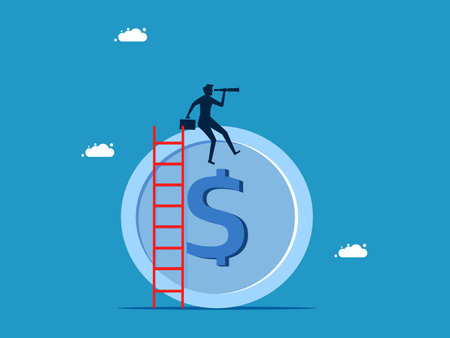1. Introduction: The American Entrepreneurial Spirit
In the United States, entrepreneurship is often seen as a cornerstone of the nation’s identity. From Silicon Valley tech giants to small-town family businesses, Americans are known for their willingness to dream big and take bold steps. However, what truly sets successful entrepreneurs apart is not just their appetite for risk, but also their ability to balance that risk with caution. This unique blend has become the foundation of the entrepreneurial mindset in America, shaped by its rich history, diverse culture, and dynamic economy.
The Roots of Risk-Taking in American Culture
The spirit of adventure and pioneering has always been a part of American history. Early settlers ventured into the unknown, seeking new opportunities despite great uncertainty. Over time, this attitude evolved into a national ethos that values innovation and bold decision-making. Taking calculated risks became synonymous with chasing the “American Dream.”
The Role of Caution in Building Sustainable Businesses
While risk-taking grabs headlines, caution is equally important. Entrepreneurs who succeed over the long term know how to assess challenges, plan carefully, and manage resources wisely. Being cautious doesn’t mean avoiding risk altogether—it means understanding when to leap and when to hold back.
Balancing Risk and Caution: A Key to Success
| Risk-Taking | Caution |
|---|---|
| Pursuing new ideas | Conducting market research |
| Investing in innovation | Managing finances wisely |
| Entering competitive markets | Building contingency plans |
| Embracing failure as learning | Learning from past mistakes |
Why Both Matter in the U.S. Context
The American entrepreneurial mindset is shaped by more than just individual ambition. Historical events like the Gold Rush, technological revolutions, and periods of economic boom and bust have taught generations of entrepreneurs the value of both daring moves and prudent decisions. This dual approach helps drive growth while minimizing unnecessary setbacks.
2. Risk-Taking: Embracing Uncertainty for Innovation
Challenging the Status Quo
In the United States, entrepreneurs are celebrated for their willingness to question traditional ways of doing things. Rather than accepting “the way it’s always been done,” American business culture encourages people to ask why and imagine how things could be better. This mindset leads to disruptive ideas and pushes industries forward. Entrepreneurs who challenge the status quo often inspire others, attract investors, and set new standards in their fields.
Valuing Bold Decisions
Bold decision-making is a hallmark of successful entrepreneurship in America. It’s about having the courage to make moves that others might consider too risky or unconventional. Whether it’s launching a unique product, entering an untapped market, or pivoting a business model, these choices can feel intimidating but are essential for growth. The U.S. business environment rewards those who aren’t afraid to stand out and take decisive action.
Turning Calculated Risks into Opportunities
Risk-taking does not mean acting recklessly; instead, it’s about weighing the potential upsides and downsides before making a move. American entrepreneurs often use research, data analysis, and mentorship to calculate risks and make informed decisions. By doing this, they turn uncertainty into opportunity and failure into learning experiences.
Examples of Calculated Risk-Taking
| Scenario | Potential Risk | Potential Reward |
|---|---|---|
| Launching a new tech startup | Losing initial investment | Becoming an industry leader |
| Introducing a groundbreaking product | Poor market adoption | Capturing a new customer base |
| Pivoting business strategy midstream | Alienating existing customers | Tapping into more profitable markets |
| Scaling quickly with venture capital | Operational challenges | Rapid growth and brand recognition |
The Culture of “Fail Fast, Learn Faster”
An important aspect of risk-taking in the U.S. is the idea that failure is not the end—it’s part of the process. The phrase “fail fast, learn faster” captures how American entrepreneurs view mistakes as valuable lessons rather than setbacks. This attitude helps them recover quickly, adapt their approach, and come back stronger with improved strategies.
The Role of Community Support
American entrepreneurs benefit from a strong network of mentors, investors, and peers who encourage smart risk-taking. Startup incubators, pitch competitions, and networking events provide safe spaces to test ideas, get feedback, and find partners willing to share both the risks and rewards.
This culture of embracing uncertainty and supporting bold moves is what allows American innovators to continually push boundaries—and sometimes change the world in the process.

3. Caution: The Importance of Due Diligence and Contingency Planning
Why Caution Matters in the U.S. Entrepreneurial Landscape
While boldness and risk-taking are celebrated traits in American entrepreneurship, caution plays an equally important role. Without careful planning and research, even the most promising ideas can quickly turn into costly mistakes. In the United States, where legal and financial stakes can be high, taking time to do your homework is not just smart—it’s essential.
Key Components of Effective Caution
1. Thorough Research
Understanding your market, customers, and competition helps you make informed decisions. This step prevents you from investing time and money into ideas that may not work in reality.
2. Legal Protections
From trademarks to contracts, legal safeguards are critical in the U.S. business environment. They help protect your intellectual property, minimize liability, and set clear expectations with partners or clients.
3. Strategic Planning
Having a solid business plan with clear goals and milestones keeps your startup focused. Additionally, building contingency plans—backup strategies for potential problems—can help you navigate unexpected challenges.
Balancing Risk with Caution: A Practical Guide
Risk-Taking Actions |
Cautious Actions |
Why It Matters |
|---|---|---|
| Pursuing a new market trend | Conducting market research before launch | Avoids investing in fads that don’t last |
| Launching an innovative product | Securing patents or trademarks first | Protects your idea from being copied |
| Scaling quickly to beat competitors | Creating detailed growth and cash flow plans | Keeps expansion sustainable and funded |
| Forming new partnerships fast | Drafting thorough legal agreements | Prevents misunderstandings and disputes |
| Taking on big clients or contracts | Building contingency plans for delivery issues | Makes sure you can handle problems if they arise |
The American Approach: Plan Smart, Act Boldly
The entrepreneurial spirit in America thrives when big ideas are matched with careful planning. By doing your due diligence and preparing for possible setbacks, you set up your venture for long-term success—even when taking calculated risks along the way.
4. Striking the Balance: Case Studies from Leading U.S. Startups
In the fast-paced world of American entrepreneurship, finding the sweet spot between taking bold risks and practicing caution is key to long-term success. Let’s look at some real-world examples of how leading U.S. startups have navigated this balancing act.
Case Study 1: Airbnb – Disrupting with Caution
Airbnb started as a daring idea—letting strangers rent out space in their homes. This was a big risk, challenging both traditional hospitality and public perception. However, Airbnb also invested heavily in safety measures, such as secure payment systems, guest reviews, and host guarantees. Their careful approach to trust and safety helped them win over users worldwide while pushing boundaries in the travel industry.
Case Study 2: Tesla – Bold Moves with Smart Safeguards
Tesla is famous for its ambitious vision: making electric cars mainstream. Elon Musk took significant risks by betting on new technologies and building massive Gigafactories. At the same time, Tesla made cautious decisions like securing government loans, pre-selling vehicles to raise funds before production, and gradually expanding its product line from high-end models to more affordable options.
Case Study 3: Warby Parker – Challenging Giants Responsibly
Warby Parker entered the eyewear market with a risk-taking direct-to-consumer model, selling glasses online at lower prices. They balanced this move by offering free home try-ons and a strong customer service team to address consumer concerns about buying glasses without trying them first. This blend of innovation and caution helped them carve out a loyal customer base in a crowded industry.
How These Startups Find Balance
| Startup | Daring Move | Cautious Safeguard |
|---|---|---|
| Airbnb | Challenged hotel industry norms | Implemented strict trust & safety policies |
| Tesla | Pioneered electric vehicles at scale | Sought government support & phased growth |
| Warby Parker | Moved eyewear sales online | Home try-ons & responsive customer support |
The Takeaway from U.S. Startups’ Approach
These stories show that successful American startups aren’t just about wild ideas—they’re about making smart choices along the way. By combining risk-taking with caution, they create solid foundations for growth while still shaking up their industries.
5. Building the Mindset: Practical Tips for Aspiring U.S. Entrepreneurs
Finding the Balance: Risk-Taking Meets Caution
In the United States, successful entrepreneurs are known for both their willingness to take risks and their ability to exercise caution. Striking this balance is key to thriving in the American business environment. Here are some practical tips and resources to help you build resilience, adaptability, and a smart approach to risk-taking:
Tips for Fostering an Entrepreneurial Mindset
| Tip | Description | Recommended Resources |
|---|---|---|
| Embrace Failure as a Learning Tool | In the U.S., failure is seen as a stepping stone rather than a setback. Use mistakes to improve your strategies. | Failory Interviews |
| Start Small, Test Often | Pilot your ideas with minimal resources before scaling up. This helps manage risk and gather feedback. | Y Combinator MVP Guide |
| Network Aggressively, But Wisely | Build connections through local events, online communities, and mentorship programs while being selective about partnerships. | SCORE Mentoring |
| Stay Adaptable | The American market changes rapidly. Keep learning and be ready to pivot when necessary. | Harvard Business Review on Adaptability |
| Create Safety Nets | Prepare contingency plans and set aside emergency funds to cushion potential losses. | U.S. Small Business Administration (SBA) |
Cultural Insights: The American Approach to Risk and Caution
- Optimism is Valued: Americans often admire bold ideas but expect entrepreneurs to back up risks with solid research and planning.
- Transparency Matters: Investors and partners appreciate honesty about risks, challenges, and failures.
- Diversity is Strength: The U.S. values diverse teams and perspectives, which can help you spot opportunities and avoid pitfalls.
- Pace of Change: The culture rewards those who move fast but also those who learn quickly from mistakes.
Building Resilience & Adaptability Step-by-Step
- Set Clear Goals: Know what success looks like for you—and be willing to adjust your targets as new information arises.
- Seek Feedback: Regularly ask customers, mentors, and peers for input to refine your ideas and reduce blind spots.
- Celebrate Small Wins: Recognize progress to stay motivated during tough times.
- Lifelong Learning: Attend workshops, listen to podcasts, or take online courses tailored to entrepreneurship in the U.S.
- Mental Health Matters: Stress is part of the journey; dont hesitate to seek support or take breaks when needed.
Your Next Steps as an Aspiring Entrepreneur in America
The journey of entrepreneurship in the United States is all about balancing courage with caution. Leverage these tips and resources as you build your own resilient, adaptable mindset—one that can navigate both the risks and rewards of the American business world.


